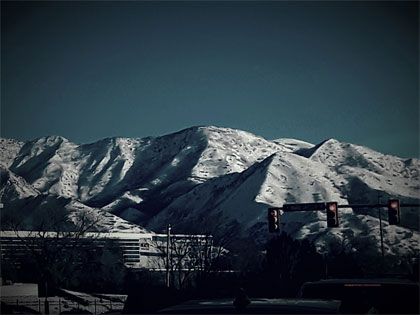
Monsters of the Mountains: Wild-Men and Hairy Creatures
Nick Redfern
Big Grey ManMountain MonstersWild-Men
Some strange creatures hide in the forests of of our world. Others lurk deep in the lakes. And some soar through our skies. Now, there is the matter of mountains and mysterious creatures. Just about everyone has heard of the Abominable Snowmen, also known as the Yetis – and of their lairs in the Himalayas. However, they aren’t the only strange and mysterious creatures that lurk in the mountains of our world. Indeed, the Yetis are far from being alone. As you will see now. Let’s begin with a marauding – possibly supernatural – creature called the Big Grey Man that dwells in Scotland. As Ben Macdhui, at 1309 metres (4296 ft), is the second highest mountain in the U.K. and lies in the heart of the mountain range known as the Cairngorms, Andy Roberts, the leading authority on the strange enigma of what has become known as Scotland’s Big Grey Man. Andy continues: “The mountain comprises of a high plateau with a sub-arctic climate and is often covered in snow for months at a time. Weather conditions can be extreme and unpredictable. Sadly, the Cairngorms have been defaced by ski-lifts and restaurants but until recently have remained remote, requiring considerable physical effort and mountain-craft to navigate successfully. ‘The wild nature and relative inaccessibility of the area has contributed to their popularity and the Cairngorms have been a playground for climbers, walkers, skiers, naturalists and those who love the high and lonely places for hundreds of years. Ben Macdhui has several spellings and its English translation is Gaelic for hill of the son of duff.”
 (Nick Redfern) Monsters on the mountains
(Nick Redfern) Monsters on the mountains
Andy adds: “‘Like any other area of land be it mountain, plain, or urban townscape Ben Macdhui and its environs have a large body of oral and written folklore which encompass phenomena which broadly fall into the Fortean and paranormal fields.” Andy says “…the Big Grey Man of Ben Macdhui become a staple for authors and journalists writing about Scottish legends. With the exceptions of the Loch Ness Monster and the Bonny bridge UFO hotspot it is arguably Scotland’s best known example of strange phenomena. So much has been written about the Big Grey Man that one could be forgiven for believing it is a well-attested experience with tens if not hundreds of witnesses. If only it were that simple! When put under the microscope, away from the conventions of story-telling or the obligations of having to make a profit, the Big Grey Man of Ben Macdhui, like the majority of other Fortean phenomena, takes on a completely different appearance.”
Andy notes that witnesses to the phenomenon known as the Big Grey Man – or the BGM – describe how they have variously encountered footsteps, a distinct sensation of a threatening “presence,” and an over-powering sense of panic while on the mountain called Ben Macdhui. The experience is graphic enough to compel witnesses to flee in sheer terror, often for several miles. And taking into consideration the fact that the encounters almost exclusively takes place on rocky, dangerous ground, often in weather conditions involving mist and snow, Andy stresses that ‘we should not underestimate the power of the experience.” Although the first recorded Big Grey Man experience did not take place until 1891, and was not made public until 1925, there are a few precursors and legends that help place the phenomenon in some geographic, folkloric and historical context, as Andy now reveals.
 (Nick Redfern)
(Nick Redfern)
“In 1791 poet James Hogg, known as the Ettrick Shepherd, described seeing a huge figure on Ben Macdhui whilst tending his sheep,” records Andy. “As he watched the halo which had formed around him due to the combination of sunshine and mist he suddenly noticed a huge, looming figure. It was vaguely human in shape and he imagined it to be the devil. Hogg fled in terror, not stopping until he reached fellow shepherds. The next day he saw the same figure under similar climatic conditions.” Hogg dramatically described the eerie experience himself, and, fortunately, his report still exists and is available for scrutiny: “‘It was a giant, at least thirty feet high and equally proportioned, and very near me. I was actually struck powerless with astonishment and terror. My first resolution was, if I could keep the power of my limbs, to run home and hide myself below the blankets with the Bible beneath my head.” Such is the fear this “thing” provokes on the mountains.
Now, onto another mountain monster: the beast of Snowdonia National Park. As Britannica say of the place: “Snowdonia National Park, Welsh Parc Cenedlaethol Eryri, national park in Gwynedd county and Conwy county borough, northern Wales, with an area of 838 square miles (2,171 square km). It is best known for its mountains, composed largely of volcanic rock and cut by valleys that show the influence of Ice Age glaciers. Snowdon mountain’s summit, Yr Wyddfa, in the northwestern part of the park, is the highest peak in England and Wales, with an elevation of 3,560 feet (1,085 metres).” Oll Lewis, a key and integral player within the Center for Fortean Zoology, has investigated a fascinating old legend pertaining to what can only be termed a definitive Welsh wild man. Oll reveals that villagers in Nant Gwynant – which is a truly picturesque valley situated in Snowdonia, Gwynedd, North Wales – have for many a century told, in hushed tones, a turbulent and nightmarish story of definitive British Bigfoot proportions, and of how a dark and mysterious cave in the old valley – the Cave of Owen Lawgoch – came to be known, decidedly infamously so, as the abode of “the hairy man.”
Oll’s research has revealed that long, long ago, villagers and shepherds in the area of Nant Gwynant were plagued by a silent and stealthy thief who would break into their homesteads under the protective covers of shadow and darkness on a disturbingly regular basis. Those same villagers and shepherds would awaken to find that their goats and cows had been inexplicably milked, much-needed food was stolen, and a number of sheep were taken during the night, never to be seen again, their unfortunate fates surely sealed. The carnage and thievery, says Oll, “went on for some years and every time anyone laid a trap for the thief it never took the bait and the finger of popular suspicion passed from ne’er-d’-well to ne’er-d’-well, with each suspect’s guilt eventually being disproved.” Moving on…
It should not come as a surprise to learn that the vast wildernesses, thick forests, and massive mountain ranges of Russia are home to Bigfoot-type beasts. They are known to the local folk as Almasty. For some researchers, the creatures are unknown apes. For others, they are nothing less than still-surviving pockets of Neanderthals. Both scenarios are amazing, in terms of their potential implications. But, whatever the true identity of the Almasty, there’s very little doubt that it exists. The sheer number of witness reports makes that very clear. The Almasty is a creature that has a long history attached to it, something which also adds to the likelihood of it being a genuine animal of very ancient proportions. Now, how about a huge snake in the mountains?
While there are numerous reports of people encountering massive snakes in the jungles of our world, certainly the strangest case on record is one that involves none other than the Central Intelligence Agency – the CIA. The story is an intrigue-filled one, which is part-James Bond and part-Indiana Jones. And it all began – and violently ended, too – in 1956. CIA personnel based out of the American Embassy in Bolivia were used to dealing with unpredictable and strange events. But, even by their standards, the events that went down in August 1956, were off the scale. In the early days of the month, CIA staff received reports of a gigantic snake on the loose in a nearby, rarely explored, cave that was buried deeply within the mountainous, jungle environment. And when I say gigantic, we’re talking about somewhere between thirty and fifty feet long. The massive thing was eventually killed
 (Nick Redfern)
(Nick Redfern)
On October 31, 2010 – appropriately Halloween, of course – a team from the British-based Center for Fortean Zoology (CFZ) embarked upon a truly ambitious expedition to the Garo Hills of Northern India in search of a legendary, hairy, man-like beast known as the Mande-burung. Or, in simpler terminology, the Indian equivalent of the United States’ Bigfoot and the Abominable Snowman of Tibet. The five-person team was led by Adam Davies – the author of the monster-hunting-themed book, Extreme Expeditions – and consisted of Dr. Chris Clark, Dave Archer, field naturalist John McGowan, and cryptozoologist Richard Freeman; the latter a former keeper at England’s Twycross Zoo and the author of many books on cryptozoology. Jon Downes, the founder and director of the CFZ, said of these strange and elusive animals: “The creatures are described as being up to ten feet tall, with predominantly black hair. Most importantly, they are said to walk upright, like a man. Walking apes have been reported in the area for many years. These descriptions sound almost identical to those reported in neighboring Bhutan and Tibet. Witnesses report that the Mande-Burung – which translates as forest man – is most often seen in the area in November.
”Jon continued: “The Garo Hills are a heavily forested and poorly explored area in Meghalaya state in the cool northern highlands of India. The area is internationally renowned for its wildlife, which includes tigers, bears, elephants and Indian rhino and clouded leopards.” He added: “The Indian team will be led by Dipu Marek, a local expert who has been on the trail of the Indian Yeti for a number of years and has, on previous occasions, found both its nests and 19-inch long ‘footprints.’ The expedition team has also arranged to interview eyewitnesses who have seen the Mande-Burung. Camera traps will be set up in sighting areas in the hope of catching one of the creatures on film.” As for what these creatures may actually represent, Jon had a few thought provoking ideas: “The Mande-Burung may be a surviving form of a giant ape known from its fossilized teeth and jaw bones, called Gigantopithecus-Blacki, which lived in the Pleistocene epoch around three hundred thousand years ago. This creature is, of course, extinct. However, much contemporary fauna such as the giant panda, the Asian tapir and the Asian elephant that lived alongside the monster ape, still survive today. It is thought by many that Gigantopithecus also survives in the impenetrable jungles and mountains of Asia. Its closest known relatives are the Orangutans of Sumatra and Borneo.”




















